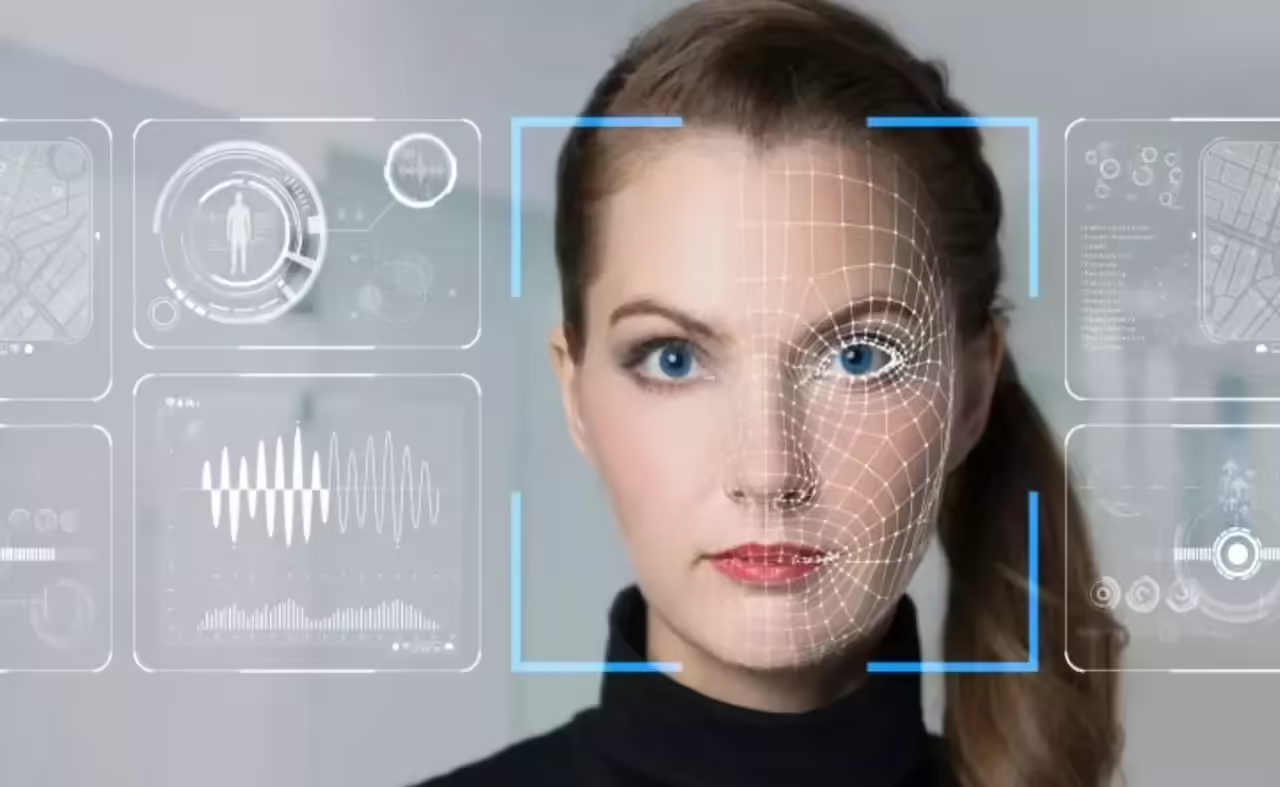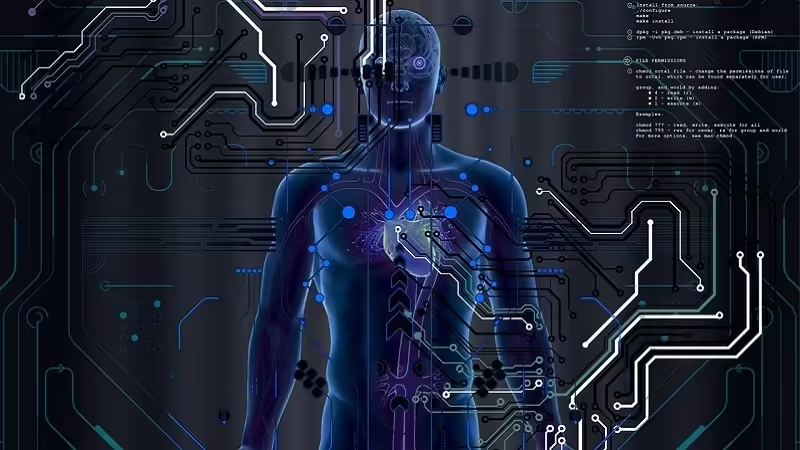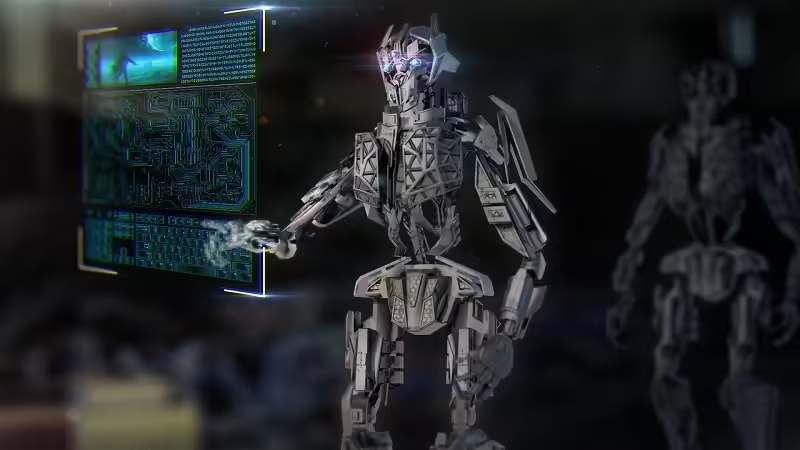
In today’s rapidly evolving technological landscape, facial recognition technology has become a subject of both fascination and concern. This cutting-edge innovation is fundamentally changing the way we interact with security systems, mobile devices, and even social media platforms. But what exactly is facial recognition technology, and how does it function?
Facial recognition technology is a biometric system that identifies and verifies individuals by analyzing and comparing unique features of their faces. These features include the distance between the eyes, the shape of the nose, the size of the mouth, and various other facial characteristics. It transforms a person’s facial image into a digital code or template, which is then used for identification or authentication purposes.
The process of facial recognition can be broken down into several key steps:
Face Detection: Initially, the technology must locate and isolate the face within an image or video frame. This is achieved through the use of complex algorithms that can identify facial features, even in challenging conditions such as low lighting or partial occlusion.
Feature Extraction: Once the face is detected, the system extracts specific facial features and landmarks, creating a unique numerical representation of the individual’s face. This representation is often referred to as a “faceprint.”
Face Comparison: The extracted faceprint is then compared to a database of stored faceprints. If a match is found, the system can confirm the person’s identity. If no match is found, the individual remains unidentified.
Decision and Action: Based on the results of the comparison, the system can take various actions. For instance, it can grant access to a secured area, unlock a smartphone, or alert security personnel about a potential threat.
Facial recognition technology relies on machine learning and artificial intelligence to continuously improve its accuracy and efficiency. As it processes more data and learns from previous matches and errors, it becomes increasingly adept at recognizing individuals, even in real-world scenarios.
Facial recognition technology has a wide range of applications, including:
Security: It is commonly used for access control, border security, and law enforcement to identify and track individuals of interest.
Mobile Devices: Many smartphones use facial recognition to unlock the device and authenticate users.
Payments: Some payment systems employ facial recognition for secure and convenient transactions.
Social Media: Facial recognition is utilized by social media platforms for tagging photos and enhancing user experiences.
Current Applications: Exploring Where Facial Recognition is Used Today
Facial recognition technology has found its way into various aspects of our daily lives, revolutionizing how we interact with the digital and physical world. Below, we delve into some of the current applications where facial recognition is actively employed:
Mobile Device Security:
Smartphone Unlocking: One of the most common and user-friendly applications of facial recognition is in mobile devices. Many smartphones now feature facial recognition as a convenient and secure method for unlocking the device. Users simply look at their phone, and if a match is found, the device unlocks.
Building Access Control:
Secure Entry: Facial recognition is increasingly being used to enhance security in office buildings, hotels, and residential complexes. Instead of traditional keycards or PIN codes, authorized personnel can gain access by having their face scanned at entry points. This ensures a higher level of security and accountability.
Surveillance Systems:
Public Safety: Law enforcement agencies and private security firms use facial recognition technology in surveillance systems to identify and track individuals in public spaces. This has applications in crime prevention, crowd monitoring, and locating missing persons.
Airport and Border Security:
Passport Control: Airports and border control agencies utilize facial recognition to streamline passport control processes. Travelers’ faces are scanned and matched with their passport photos, making the customs and immigration process more efficient and secure.
Banking and Financial Services:
Secure Transactions: Some banks and financial institutions have adopted facial recognition as an additional layer of security for high-value transactions. It ensures that only authorized users can access their accounts and perform sensitive operations.
Retail and Customer Service:
Customer Experience: In the retail sector, facial recognition can be used to personalize customer experiences. Stores can analyze customer demographics and preferences to tailor marketing and services.
Healthcare:
Patient Identification: Hospitals and healthcare facilities have begun using facial recognition for patient identification. This helps prevent medical errors and enhances the accuracy of patient records.
Social Media and Entertainment:
Photo Tagging: Popular social media platforms like Facebook employ facial recognition to automatically tag individuals in photos. Additionally, some video games use facial recognition to enhance player experiences by replicating facial expressions in avatars.
Human Resources:
Time and Attendance: Companies use facial recognition to manage employee time and attendance. Employees can clock in and out using facial recognition, reducing timekeeping errors.
Access to Smart Devices and Services:
Voice Assistants: Some voice-activated virtual assistants, like Amazon’s Alexa, offer facial recognition capabilities. Users can link their voice profiles with their faces to enhance personalization and security.
Benefits of Facial Recognition: Enhancing Security and Efficiency
Facial recognition technology offers a myriad of benefits, making it a valuable tool across various sectors. Among its advantages, two standout benefits are its capacity to enhance security and streamline the identification of individuals. Let’s delve into these advantages in more detail:
Enhanced Security:
Effective Access Control: Facial recognition serves as an effective access control mechanism. In scenarios where secure entry is essential, such as office buildings, data centers, or government facilities, facial recognition systems can accurately verify the identity of individuals seeking access. Unauthorized persons are unable to gain entry, bolstering security.
Reduced Fraud: Facial recognition technology significantly reduces the risk of fraud. For instance, in the financial sector, it ensures that only authorized individuals can access their accounts, preventing fraudulent transactions.
Improved Law Enforcement: In the realm of law enforcement, facial recognition aids in identifying suspects and locating missing persons. It enhances public safety by helping authorities quickly identify and apprehend individuals with criminal records.
Airport and Border Control: Airports and border security agencies employ facial recognition to enhance security and streamline the passport control process. Travelers’ faces are matched with their passport photos, reducing the risk of identity theft or document forgery.
Efficiency in Identification:
Rapid Authentication: Facial recognition offers rapid authentication. Users can unlock their smartphones, access secured areas, or complete transactions with a simple glance, eliminating the need for cumbersome passwords or physical identification cards.
Time and Attendance Management: In corporate settings, facial recognition is utilized for efficient time and attendance management. Employees can clock in and out by having their faces scanned, minimizing errors and improving workforce management.
Healthcare Accuracy: In healthcare, facial recognition ensures accurate patient identification. This reduces medical errors, enhances the quality of healthcare services, and maintains precise patient records.
Personalized Experiences: In the retail and entertainment sectors, facial recognition enables personalized experiences. Stores can tailor their offerings based on customer demographics and preferences, leading to more satisfying shopping experiences.
Convenience in Public Spaces: Facial recognition in public spaces can improve convenience for citizens. For example, in smart cities, residents might use it for secure access to public transportation or city services.
The Future of Facial Recognition: Speculating on Evolution, Uses, and Emerging Challenges
Facial recognition technology has made significant strides in recent years, but its journey is far from over. The future promises both exciting developments and novel challenges. Here’s a speculative look at how facial recognition technology might evolve and the potential uses and emerging challenges it could face:
Wider Adoption Across Industries:
Evolution: Facial recognition is likely to become more prevalent across industries. Sectors such as healthcare, education, and transportation may embrace the technology for identity verification, access control, and personalized services.
Uses: Hospitals could use it to ensure accurate patient identification, schools might employ it for secure campus access, and public transportation systems could implement it for ticketless boarding.
Challenges: Widespread adoption raises concerns about data security, privacy, and potential misuse. Striking the right balance between convenience and safeguarding individual rights will be crucial.
Improved Accuracy and Speed:
Evolution: Continued advancements in machine learning and computer vision will lead to even greater accuracy and speed in facial recognition algorithms.
Uses: Enhanced accuracy will make the technology more reliable for critical applications such as law enforcement and border security.
Challenges: The pursuit of perfect accuracy may raise concerns about false positives and potential bias in algorithm training data.
Facial Recognition in Healthcare:
Evolution: The healthcare industry will likely see increased adoption of facial recognition for patient identification, monitoring patient health, and predicting medical conditions.
Uses: Physicians may use the technology to track patient vital signs remotely, identify patients quickly in emergency situations, and personalize treatment plans.
Challenges: Ensuring data privacy and addressing concerns about the storage and sharing of sensitive medical information will be essential.
Ethical Considerations:
Evolution: Ethical considerations surrounding facial recognition will take center stage. Discussions will revolve around consent, transparency, and the responsible use of the technology.
Uses: Businesses and governments will need to implement strict ethical guidelines for the deployment of facial recognition in areas such as advertising, hiring, and law enforcement.
Challenges: Balancing innovation and ethics will be an ongoing challenge, and clear regulations will be needed to prevent misuse.
Mitigating Bias and Discrimination:
Evolution: Efforts to mitigate bias in facial recognition algorithms will intensify. Research and development will focus on creating more fair and inclusive systems.
Uses: Fairer algorithms will be crucial in ensuring equitable access and treatment, particularly in law enforcement and hiring practices.
Challenges: Achieving fairness in algorithms is a complex task, and addressing bias effectively will require collaboration between technologists, ethicists, and policymakers.
Privacy-Preserving Solutions:
Evolution: Innovations in privacy-preserving facial recognition techniques will emerge, allowing individuals to retain more control over their biometric data.
Uses: Users may be able to opt for systems that do not store facial data centrally, but instead, use secure, decentralized methods for verification.
Challenges: Building trust in privacy-preserving technologies and ensuring their effectiveness will be essential.







